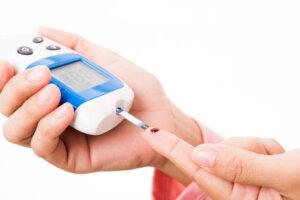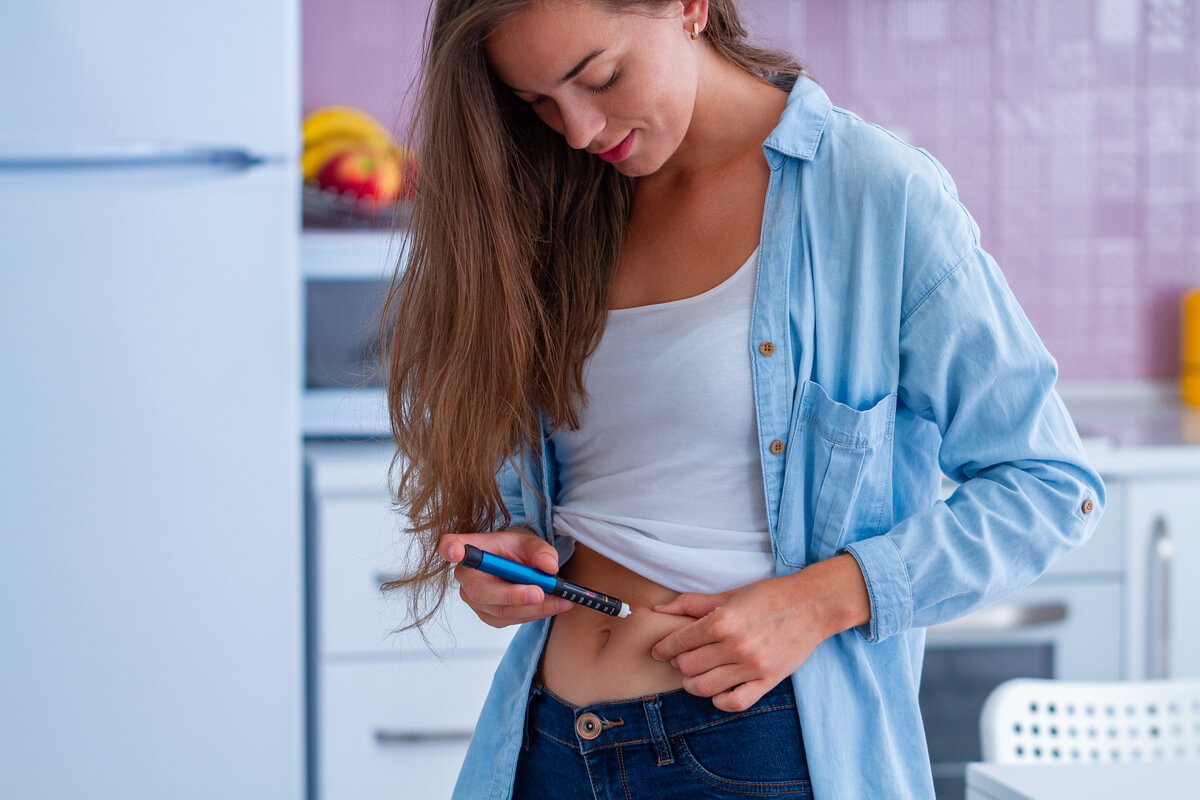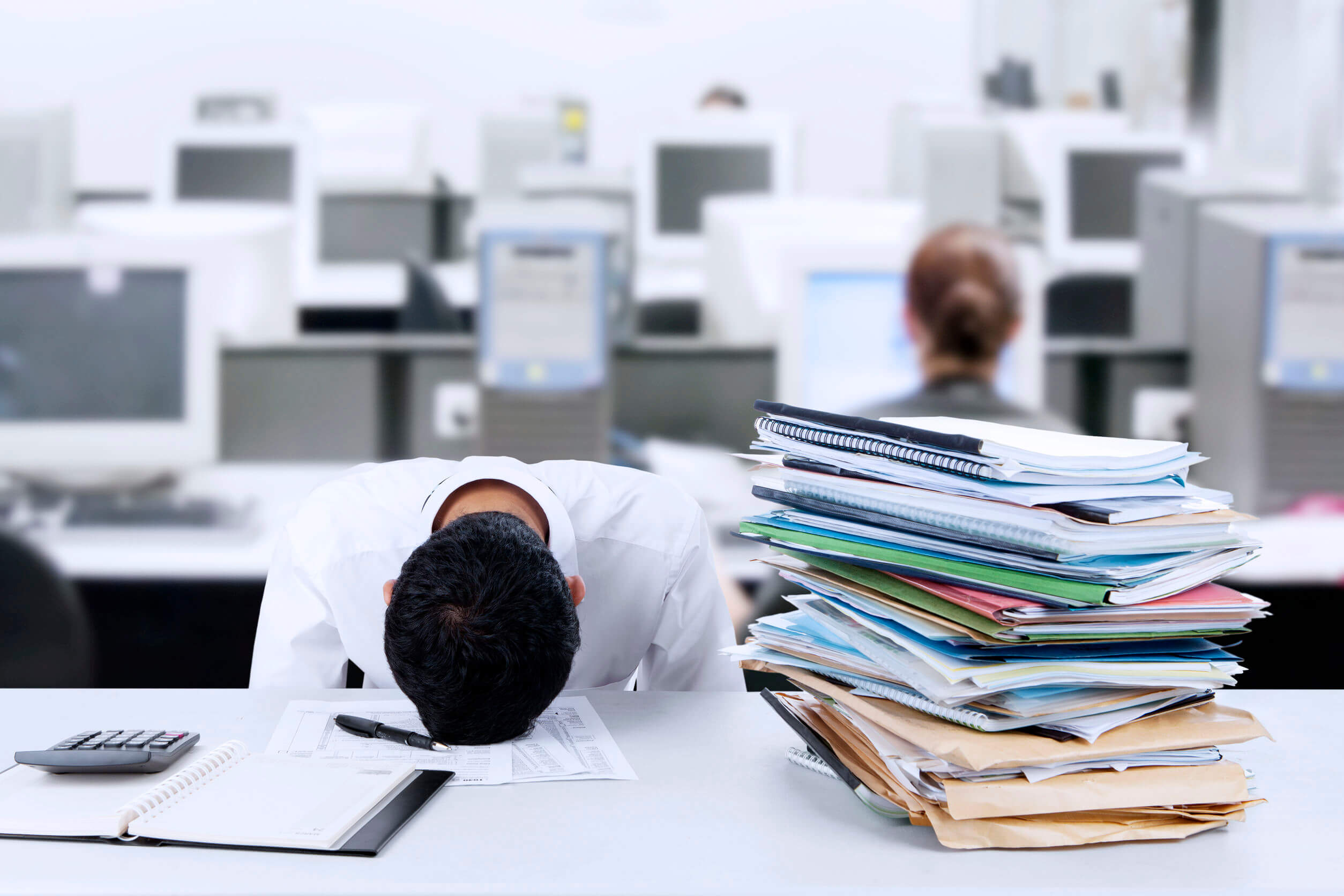How to Lower Your Blood Sugar

High blood sugar levels above normal values is a medical condition known as hyperglycemia. Prolonged hyperglycemia can cause damage to different tissues, so it’s important to know how to lower your blood sugar.
High blood glucose levels can have a wide variety of causes, from a diet rich in carbohydrates to the use of certain drugs such as corticosteroids. This is a common complication in people with diabetes, although studies claim that it appears in a significant number of patients with no history of the disease.
There are many complications associated with hyperglycemia such as diabetic ketoacidosis and hyperglycemic hyperosmolar syndrome. In this way, lowering blood sugar is essential in order to prevent further damage. One of the quickest ways to do this is by taking rapid-acting insulin, although there are other helpful measures too.
Administer insulin

Insulin is a hormone synthesized in the beta cells of the pancreas, whose main function is to introduce glucose into the cells so that it’s used as energy. In this way, exogenous insulin administration is one of the fastest ways to control hyperglycemia, both in hospitalized and non-hospitalized patients.
The type of insulin used to control sudden hyperglycemia in patients with type 1 diabetes is rapid-acting insulin, which works in less than 15 minutes. However, its use is more limited in people with type 2 diabetes, in whom the first option is to use other types of drugs.
This hormone is administered subcutaneously, that is, under the skin. One of the most frequent application sites is the abdomen due to its great blood supply, although it can also be applied in other regions.
Studies show that the administration of insulin improves the prognosis of hospitalized patients with hyperglycemia by reducing blood sugar effectively.
Exercising and cutting carbs
Lifestyle changes are critical to treating the different types of diabetes. Physical activity and exercise help to significantly lower blood glucose levels in the short and long term, especially in patients with diabetes or hyperglycemia.
Continuous exercise causes muscles to contract, which will increase glucose input into cells in a non-insulin-dependent pathway. The constant stimulation of the muscles also increases insulin sensitivity, an effect that can last up to 24 hours.
It’s best to monitor blood glucose levels before and after exercising to notice variations. A sharp increase in carbohydrate intake can lead to hyperglycemia, so reducing your intake can help lower blood sugar.
Carbohydrates are an essential part of people’s diet, so they shouldn’t be completely eliminated. People with hyperglycemia should look for sources of this macronutrient that don’t have as much impact on blood sugar levels. In this sense, it’s advisable to replace bread and flour with fruits, vegetables, and whole grains.
Drink plenty of water
Water is a fundamental component of life as it helps to maintain the body’s balance. People diagnosed with diabetes should drink plenty of water, especially if they have hyperglycemia. During this state, the body will increase the production of urine and other fluids in order to expel excess glucose.
The body will only be able to produce a large amount of urine if it has enough water, so the intake of the vital liquid facilitates the elimination of glucose, helping to lower blood sugar. The consumption of other fluids without sugar also has the same effect; in addition, they prevent dehydration and maintain the body temperature at normal values.
On the other hand, studies show the relationship between water consumption and hyperglycemia, which is why those with an abundant water intake are less likely to suffer from the condition.
Daily water requirements can vary from person to person, but, in general terms, it’s advisable to consume at least 2 liters or 8 glasses of water a day.
Reduce stress

Stress is a condition that can affect people’s health in many ways, including a sudden spike in blood sugar levels. This pathological state creates the secretion of hormones such as glucagon and cortisol, which tend to generate a transient state of hyperglycemia.
When people are subjected to constant stress, the hyperglycemia generated lasts over time, and can cause damage. In this sense, it’s recommended for people to avoid stressful situations as much as possible.
Relaxing recreational activities such as yoga, exercise, and meditation also give good results.
Taking forgotten medication
People with diabetes must take medication known as hypoglycemic drugs, which will keep blood sugar at adequate levels. Blood glucose can rise abruptly when you miss one or more doses of the corresponding medicine.
To solve this problem, you’ll need to ingest the appropriate dose as soon as you can. In this way, people with type 1 diabetes will take their insulin dose and those with type 2 diabetes will take their medications.
It’s important to take the usual dose and not double it, as this can lead to a condition called hypoglycemia.
When to go to the doctor to lower blood sugar?
High blood sugar levels can quickly become a life-threatening medical situation. Because of this, it’s vitally important to know how to recognize the symptoms of this condition, among which the following stand out:
- Excessive thirst or polydipsia
- Increased voiding volume or polyuria
- Fruity-flavored breath
- Difficulty breathing
- Stomach ache
Everyone should see a doctor immediately when they register a blood glucose level equal to or greater than 300 milligrams per deciliter in two random readings. Another red flag to watch out for is high blood glucose levels for more than a week. Both conditions are indicative of a worsening of the disease.
Constant glucose monitoring is important
All people diagnosed with diabetes must maintain constant blood glucose control throughout the day. This will allow adequate measures to be taken to lower blood sugar when necessary, in order to prevent any complications.
The aforementioned techniques are useful, although it’s best to keep your doctor informed about the situation.
High blood sugar levels above normal values is a medical condition known as hyperglycemia. Prolonged hyperglycemia can cause damage to different tissues, so it’s important to know how to lower your blood sugar.
High blood glucose levels can have a wide variety of causes, from a diet rich in carbohydrates to the use of certain drugs such as corticosteroids. This is a common complication in people with diabetes, although studies claim that it appears in a significant number of patients with no history of the disease.
There are many complications associated with hyperglycemia such as diabetic ketoacidosis and hyperglycemic hyperosmolar syndrome. In this way, lowering blood sugar is essential in order to prevent further damage. One of the quickest ways to do this is by taking rapid-acting insulin, although there are other helpful measures too.
Administer insulin

Insulin is a hormone synthesized in the beta cells of the pancreas, whose main function is to introduce glucose into the cells so that it’s used as energy. In this way, exogenous insulin administration is one of the fastest ways to control hyperglycemia, both in hospitalized and non-hospitalized patients.
The type of insulin used to control sudden hyperglycemia in patients with type 1 diabetes is rapid-acting insulin, which works in less than 15 minutes. However, its use is more limited in people with type 2 diabetes, in whom the first option is to use other types of drugs.
This hormone is administered subcutaneously, that is, under the skin. One of the most frequent application sites is the abdomen due to its great blood supply, although it can also be applied in other regions.
Studies show that the administration of insulin improves the prognosis of hospitalized patients with hyperglycemia by reducing blood sugar effectively.
Exercising and cutting carbs
Lifestyle changes are critical to treating the different types of diabetes. Physical activity and exercise help to significantly lower blood glucose levels in the short and long term, especially in patients with diabetes or hyperglycemia.
Continuous exercise causes muscles to contract, which will increase glucose input into cells in a non-insulin-dependent pathway. The constant stimulation of the muscles also increases insulin sensitivity, an effect that can last up to 24 hours.
It’s best to monitor blood glucose levels before and after exercising to notice variations. A sharp increase in carbohydrate intake can lead to hyperglycemia, so reducing your intake can help lower blood sugar.
Carbohydrates are an essential part of people’s diet, so they shouldn’t be completely eliminated. People with hyperglycemia should look for sources of this macronutrient that don’t have as much impact on blood sugar levels. In this sense, it’s advisable to replace bread and flour with fruits, vegetables, and whole grains.
Drink plenty of water
Water is a fundamental component of life as it helps to maintain the body’s balance. People diagnosed with diabetes should drink plenty of water, especially if they have hyperglycemia. During this state, the body will increase the production of urine and other fluids in order to expel excess glucose.
The body will only be able to produce a large amount of urine if it has enough water, so the intake of the vital liquid facilitates the elimination of glucose, helping to lower blood sugar. The consumption of other fluids without sugar also has the same effect; in addition, they prevent dehydration and maintain the body temperature at normal values.
On the other hand, studies show the relationship between water consumption and hyperglycemia, which is why those with an abundant water intake are less likely to suffer from the condition.
Daily water requirements can vary from person to person, but, in general terms, it’s advisable to consume at least 2 liters or 8 glasses of water a day.
Reduce stress

Stress is a condition that can affect people’s health in many ways, including a sudden spike in blood sugar levels. This pathological state creates the secretion of hormones such as glucagon and cortisol, which tend to generate a transient state of hyperglycemia.
When people are subjected to constant stress, the hyperglycemia generated lasts over time, and can cause damage. In this sense, it’s recommended for people to avoid stressful situations as much as possible.
Relaxing recreational activities such as yoga, exercise, and meditation also give good results.
Taking forgotten medication
People with diabetes must take medication known as hypoglycemic drugs, which will keep blood sugar at adequate levels. Blood glucose can rise abruptly when you miss one or more doses of the corresponding medicine.
To solve this problem, you’ll need to ingest the appropriate dose as soon as you can. In this way, people with type 1 diabetes will take their insulin dose and those with type 2 diabetes will take their medications.
It’s important to take the usual dose and not double it, as this can lead to a condition called hypoglycemia.
When to go to the doctor to lower blood sugar?
High blood sugar levels can quickly become a life-threatening medical situation. Because of this, it’s vitally important to know how to recognize the symptoms of this condition, among which the following stand out:
- Excessive thirst or polydipsia
- Increased voiding volume or polyuria
- Fruity-flavored breath
- Difficulty breathing
- Stomach ache
Everyone should see a doctor immediately when they register a blood glucose level equal to or greater than 300 milligrams per deciliter in two random readings. Another red flag to watch out for is high blood glucose levels for more than a week. Both conditions are indicative of a worsening of the disease.
Constant glucose monitoring is important
All people diagnosed with diabetes must maintain constant blood glucose control throughout the day. This will allow adequate measures to be taken to lower blood sugar when necessary, in order to prevent any complications.
The aforementioned techniques are useful, although it’s best to keep your doctor informed about the situation.
- Sánchez M, Luna M, Villarreal Y, Zerpa Y, Bermúdez A. Manejo de la hiperglucemia en el paciente hospitalizado con diabetes mellitus. Rev. Venez. Endocrinol. Metab. 2014; 12(1): 34-40.
- McDonnell M, Umpierrez G. Insulin Therapy for the Management of Hyperglycemia in Hospitalized Patients. Endocrinology and Metabolism Clinics of North America. 2012;41(1):175-201.
- Roussel R, Fezeu L, Bouby N, Balkau B, Lantieri O, Alhenc-Gelas F et al. Low Water Intake and Risk for New-Onset Hyperglycemia. Diabetes Care. 2011;34(12):2551-2554.
- Echouffo-Tcheugui JB, Garg R. Management of Hyperglycemia and Diabetes in the Emergency Department. Curr Diab Rep. 2017;17(8):56.
- Duggan EW, Carlson K, Umpierrez GE. Perioperative Hyperglycemia Management: An Update. Anesthesiology. 2017;126(3):547-560.
- Kharode I, Coppedge E, Antal Z. Care of Children and Adolescents with Diabetes Mellitus and Hyperglycemia in the Inpatient Setting. Curr Diab Rep. 2019;19(10):85.
Este texto se ofrece únicamente con propósitos informativos y no reemplaza la consulta con un profesional. Ante dudas, consulta a tu especialista.







